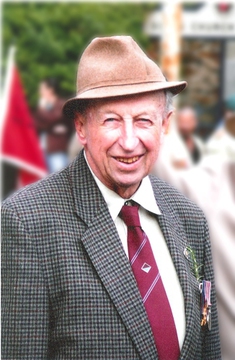HILDER, John Thomas
| Service Number: | SX19105 |
|---|---|
| Enlisted: | 20 January 1943, Wayville, SA |
| Last Rank: | Private |
| Last Unit: | Not yet discovered |
| Born: | Adelaide, South Australia, 21 January 1924 |
| Home Town: | Cradock, Flinders Ranges, South Australia |
| Schooling: | Not yet discovered |
| Occupation: | Not yet discovered |
| Memorials: | Cradock War Memorial, Hawker Cradock WW2 Roll of Honour, Hawker District WW2 Roll of Honour, Hawker War Memorial Park |
World War 2 Service
| 20 Jan 1943: | Involvement Private, SX19105 | |
|---|---|---|
| 20 Jan 1943: | Enlisted Wayville, SA | |
| 20 Jan 1943: | Enlisted Australian Military Forces (WW2) , Private, SX19105 | |
| 20 Jan 1943: | Honoured Australia Service Medal 1939-1945, Bougainville, 1939/45 Star Pacific Star Defence Medal War Medal 45-75 ASM | |
| 10 Apr 1946: | Discharged Australian Military Forces (WW2) , Private, SX19105 | |
| 10 Apr 1946: | Discharged | |
| Date unknown: | Involvement |
Military History
John Thomas Hilder enlisted in the 2Nd AIF (Army) on 21st January 1943 (Aged 19 Years). He enlisted at the Wayville showgrounds in Adelaide South Australia. John was born in Adelaide on the 21st January 1924, prior to enlisting John was a station hand on his Family sheep property located near Cradock South Australia in the Mid North.
John was sent to Puckapunyal Army camp located near Seymore in Victoria in which his training included, infantry, Mortar and Bren light machine gun carrier courses.
John noted in later years that he recalled travelling by train to Werribee (located West of Melbourne) and attended the Werribee Cup, during a rare day of leave which was a highlight of his time in Victoria.
John joined the 27th Australian Infantry Battalion (known as the chocolate and blue soldiers – referring to their brown and blue diamond colour patch sewn to the puggaree on their slouch hats) as a reinforcement on 06 March 1944. When John arrived the 27th Battalion were conducting Jungle Warfare training in the Atherton Tablelands in Queensland, this was apart of the subsequent preparation for active service in New Guinea. Around this time the 27th Battalion were gazetted as a AIF Battalion under the defence act (1903).
In late May 1944, the 27th Battalion along with John embarked from Cairns on the Australian Army requisitioned ship MV Duntroon to Lae, before proceeding to Wau where the 27th underwent further jungle warfare training while waiting for the American troops to established footholds on its way to Bougainville. The battalion was deployed to Green Island on the United States troop ship SS Carlos Carrillo in September 1944, relieving the American troops defending Lagoon Airfield.
In early 1945, the 27th battalion moved to Bougainville to take part in the Australian campaign there. Initially, it was tasked with relieving the 55th/53rd Battalion at Laruma River in the central sector of the island in March. In April, the battalion pressed on to Pearl Ridge where they took over from the 31st/51st Battalion and began to carry out patrols in front of the ridge. Over the course of six weeks, the battalion carried out a number of minor attacks and in the process captured several key features before moving to the northern sector of the island on the Bonis Peninsula around Ratsua where they continued to harass Japanese forces through active patrolling and ambushing. This continued until the end of the war in August 1945.
Following the Japanese surrender, the 27th Battalion ceased operations and was transported to Torokina, where they had to wait for shipping to become available for repatriation back to Australia to begin the demobilisation process. While many of the Battalion returned home John remained on Morotai Island as a part of a security detail to conduct the security of Japanese POWs. John arrived back in Australia, returning to Brisbane 21 Jan 1946 and was Discharged on 10 April 1946 at Hampstead Barracks in Adelaide.
Pte John Hilder SX19105 served a total of 1177 day of which 620 were on overseas active service.
Following the War he married and had three children. He went on to become a grazer and operate his own sheep station Acacia Valley until his retirement in the early 1980s. He was a active member of the South Australian Branch of the RSL, the 27 Battalion Scottish regiment association, founded sporting clubs in the Township of Hawker and was a chairperson of a number of boards notably Nobels Steel. He passed away on the 31st of October 2010. His ashes were spread on the hill side overlooking his home at Acacia Valley located near Cradock South Australia. The remainder of his ashes are interned at the Hawker Cemetery – Memorial ID 197275695.
A true gentleman.
Submitted 3 May 2022 by Stephen Watson











